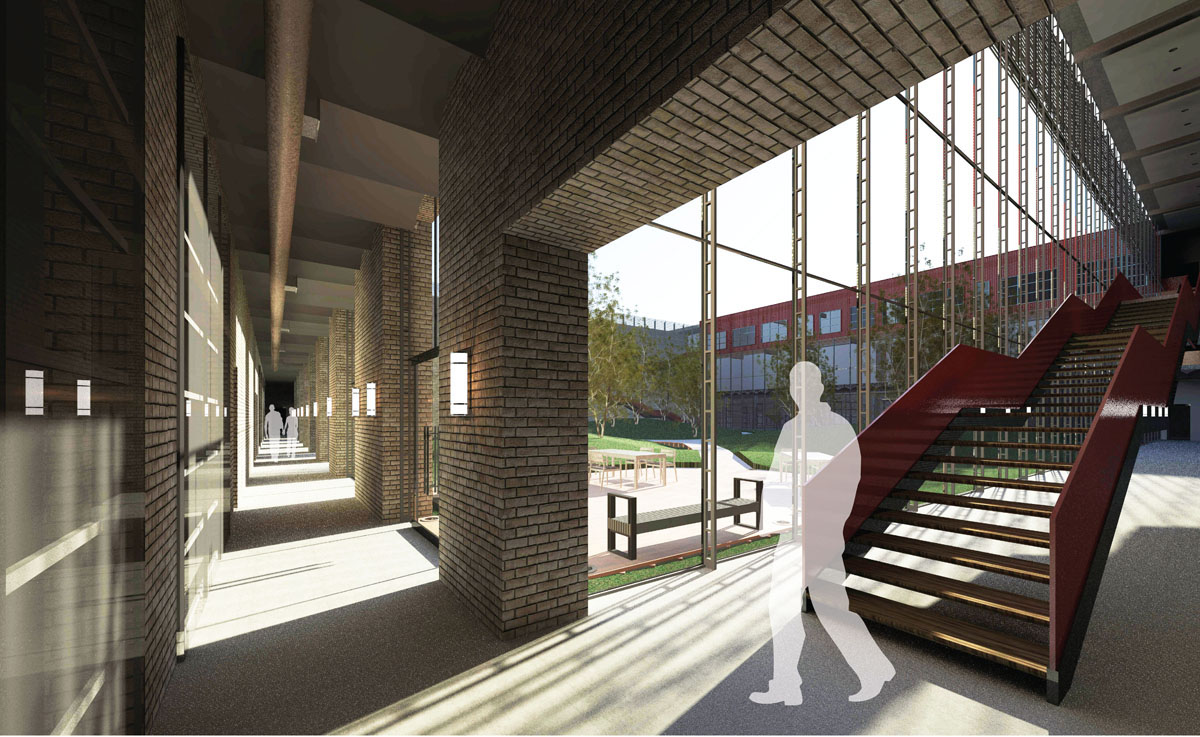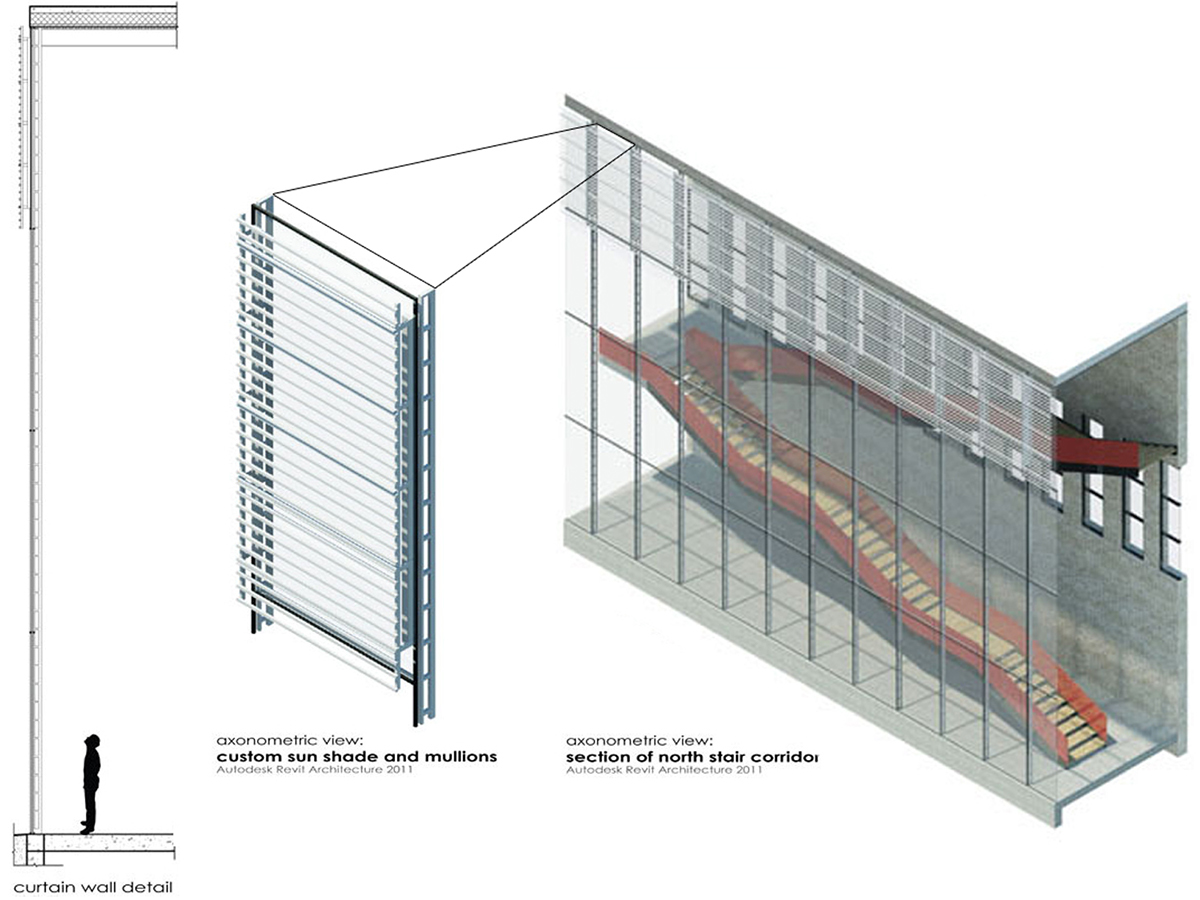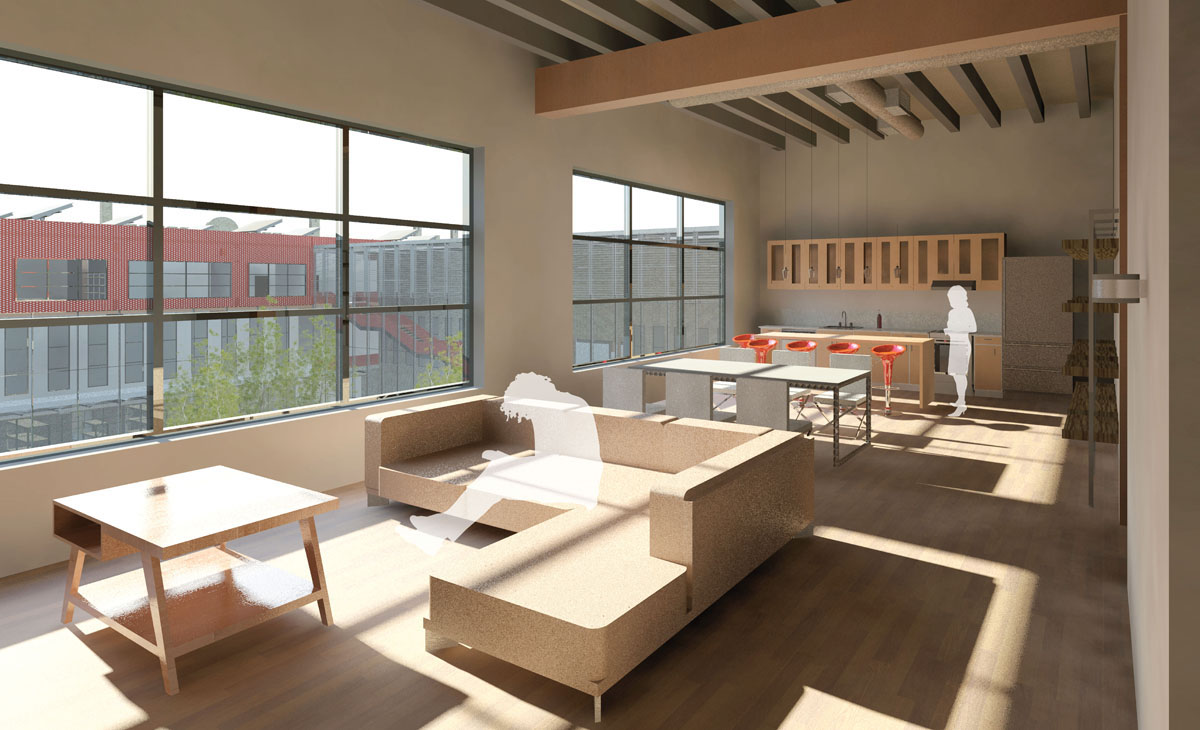PAST
The legacy of our buildings, what we choose to tear down and what we choose to keep, defines who we are and what we value. In understanding the past we create the potential to combine the old fabric of our cities with new ideas, creating almost limitless resources for the future. Historic buildings help define the character of our communities and provide a tangible link to the past.
The historic industrial buildings that we choose to keep are physical and tangible reminders of the original nature of the place, and they become material evidence of cultural development. Without the element of time, the past cannot be represented in a space, but character-defining features help to illuminate the industrial traditions, and provide evidence of a particular history that emphasizes a place's social construction and continuum through time.

Fenestration Study
updown

PRESENT
In the past, building conversion often took place without regard for the history or the "character" of the structure. Today, deciding what to save and what to do with the buildings we do save are just the first steps. We must also be aware of how much we can change a building before it loses the very qualities we set out to preserve.
FUTURE
Preservation for the future, then, involves designing buildings that are not only built to last, but that will also remain capable of offering new options for their use. More options for a builidng's use will inevitably ensure the longevity of the structure. Industrial structures, for example, are particularly susceptible to adaptation due to the availability of capital for investment, market forces and the introduction of new technologies.

Interior Rendering of North stair looking into courtyard.


Interior Rendering of 3rd Floor apartment living space.

Images of Site Context Model











